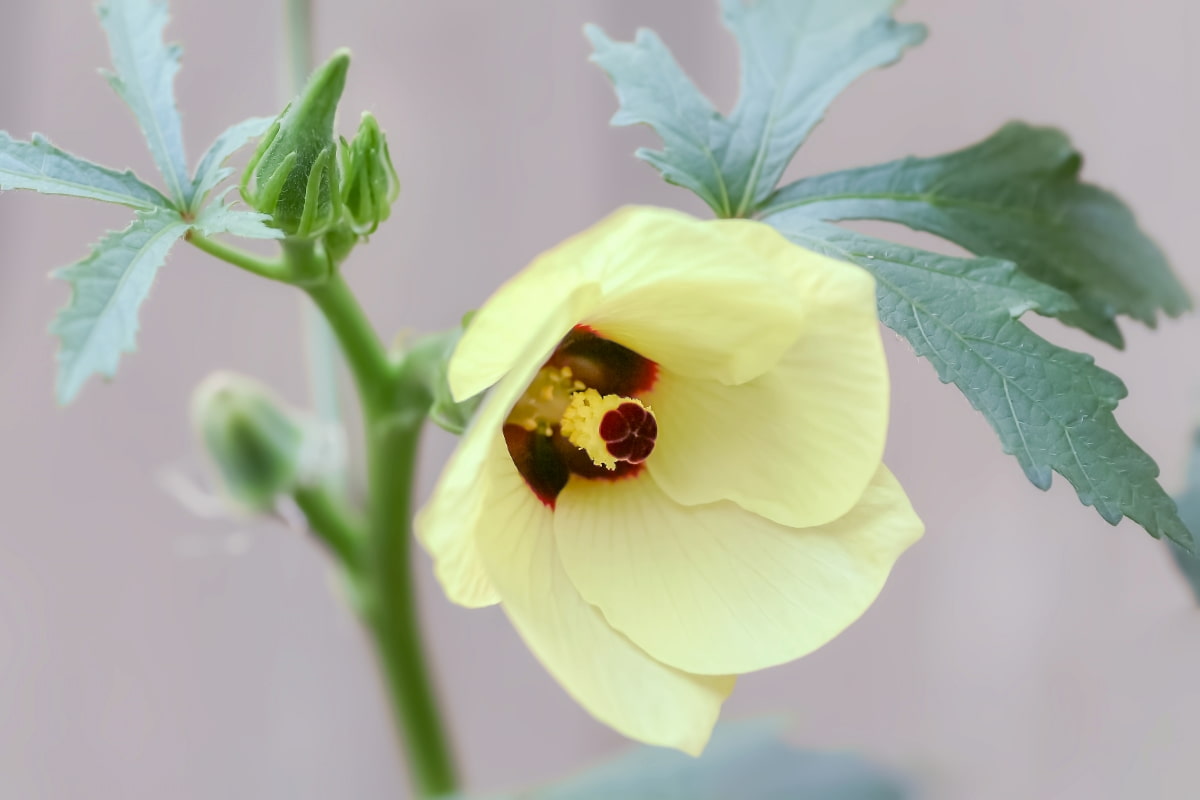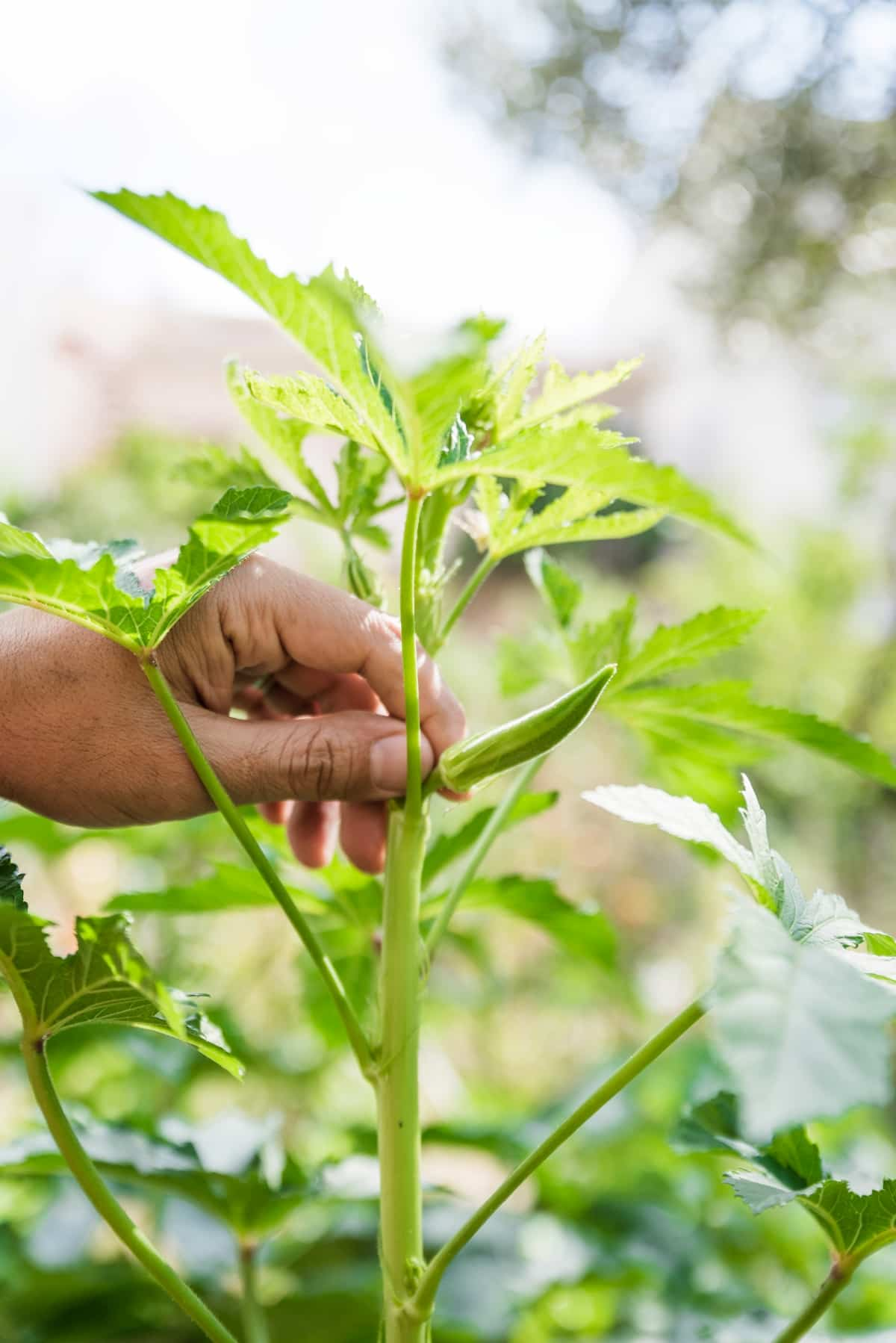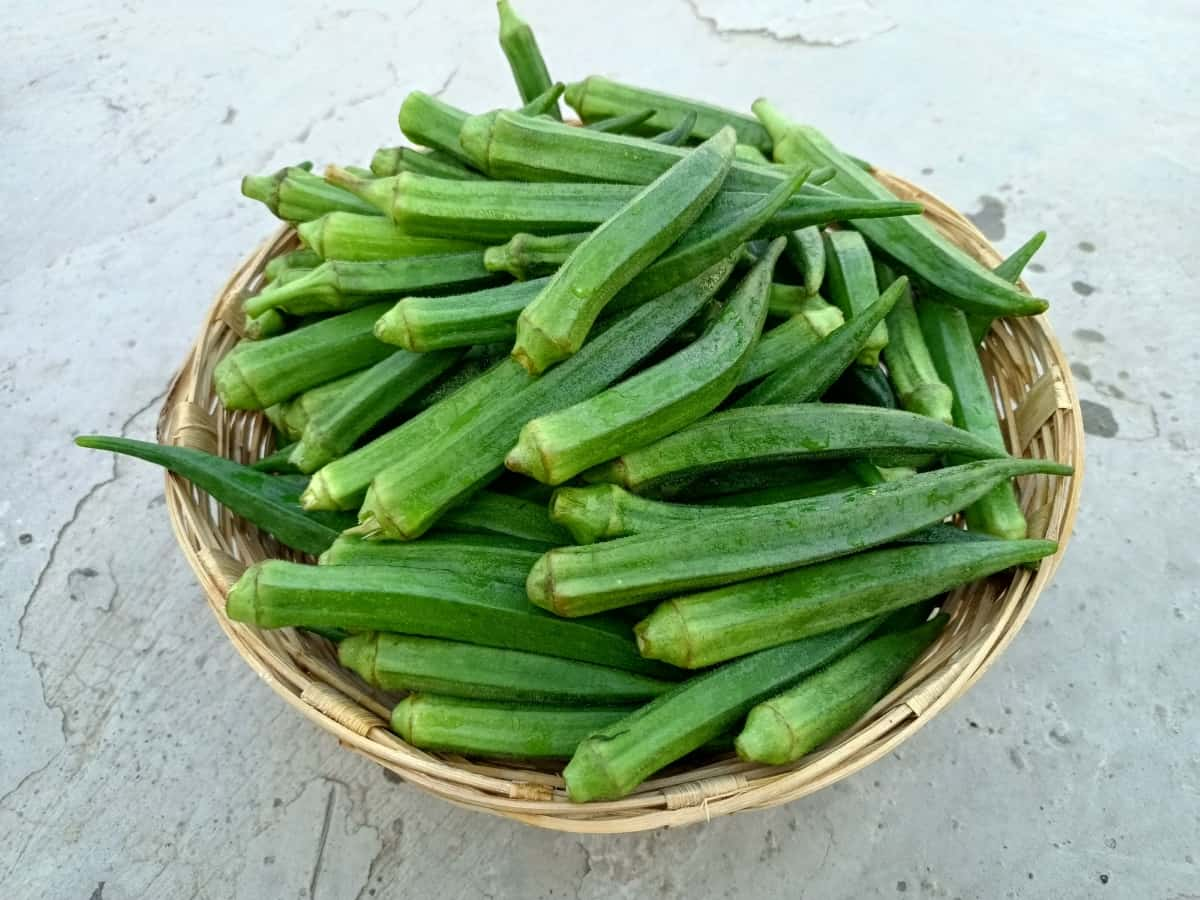Okra leafhoppers are tiny insects that belong to the family of leafhopper bugs. These pests can wreak havoc on your Okra plants if left unchecked. They feed on the sap of the leaves and stems, causing yellowing and stunting of the plant. These pests reproduce rapidly, especially during warm weather conditions. It’s essential to identify Leafhoppers in Okra early on and take necessary measures to control their population before they cause significant damage to your crops.

How to Control Okra Leafhoppers Naturally
Okra Leafhopper Control: Using Natural Predators
You can attract ladybugs to the garden by planting daisies, marigolds, and yarrows. Another beneficial predator is the lacewing. Lacewing larvae consume many leafhopper eggs and nymphs, making them an excellent choice for biological control. To encourage lacewings in your garden, provide habitat structures like tall grasses or artificial nesting sites. Applying these natural predators to your garden or farm ecosystem through proper management practices and providing suitable habitats for them to thrive can significantly reduce Okra Leafhopper’s presence without relying on chemical pesticides.
Natural Repellents for Okra Leafhoppers
- Neem Oil: This organic insecticide has been used centuries to repel various pests, including leafhoppers. Its strong scent and bitter taste make it an effective deterrent.
- Garlic Spray: Mixing crushed garlic with water and spraying it on your Okra plants can keep leafhoppers at bay. The pungent odor is unappealing to these pests, preventing them from settling and causing damage.
- Hot Pepper Spray: Capsaicin, the compound responsible for the heat in hot peppers, acts as a natural repellent against many insects, including leafhoppers. Blend hot peppers with water and strain them before applying them to your plants.
Physical Barriers to Okra Leafhopper Control
Floating row covers are lightweight fabrics placed directly over the plants. These covers allow sunlight, water, and air to reach the plants while creating a barrier that keeps out leafhoppers and other insects. Mesh or netting around your Okra plants provides a physical barrier that prevents leafhoppers from landing on the leaves and feeding on them.
The mesh or netting should have small enough holes to prevent the leafhoppers from passing through but still allow for proper airflow. Regular maintenance of these barriers is crucial for their effectiveness. Inspect them frequently for any tears or openings where insects can get through. Repair any damages promptly to maintain an effective barrier throughout the growing season.
Traps for Okra Leafhoppers
Yellow sticky traps are coated with a sticky substance that captures the leafhoppers when they land on them. These traps should be placed strategically around your garden, close to your Okra plants. The bright yellow color attracts the leafhoppers, making them more likely to land on the trap instead of your crops. It’s essential to monitor these traps and replace them when necessary regularly.
In case you missed it: Algal Leaf Spot Disease Management in Guava: Symptoms, Treatment, Cultural, Chemical Control

Emptying or replacing full sticky traps will ensure their continued effectiveness in trapping leafhoppers. Using traps as part of an integrated pest management approach can help reduce the damage caused by Okra Leafhoppers without relying on chemical pesticides. Using natural methods like traps, you can maintain a healthy and thriving garden while minimizing harm to beneficial insects and wildlife.
Cultural Control Methods for Okra Leafhoppers
Crop Rotation – Avoid planting Okra in the same location year after year, as this can lead to increased populations of leafhoppers. Instead, rotate your crops and grow different vegetables or flowers in the affected area.
Intercropping – Planting companion plants like marigolds or basil alongside your Okra can help deter leafhoppers. These plants emit scents that repel the insects, reducing their presence in your garden.
Practicing good sanitation – Remove any weeds or debris from your garden regularly, as they provide hiding places for leafhoppers. Additionally, clean up fallen leaves and spent vegetation at the end of each growing season to prevent overwintering sites for pests.
Okra Varieties Resistant to Leafhoppers
- Clemson Spineless – It produces tender and delicious pods but has some natural resistance against leafhopper damage.
- Annie Oakley II – It is a variety that boasts high yields and good tolerance to leafhoppers. It also produces tasty and attractive red pods.
- Burgundy – If you want a colorful addition to your garden, consider planting “Burgundy.” This unique variety features stunning burgundy-colored foliage and stems while strongly resisting leafhopper attacks.
Timing of Planting for Okra Leafhopper Control
These tiny pests are most active during warm weather, so it’s essential to time your planting accordingly. To maximize control, plant Okra early in the season when temperatures are cooler and leafhopper populations are still low. Additionally, consider staggered planting to avoid peak infestations further. It’s also worth noting that Okra is a warm-season crop that thrives in hot climates. When planted too late in the season, the Okra may not mature before cooler temperatures set in and leafhopper populations decline naturally.
Okra Leafhopper Biological Control
The primary method of controlling Okra Leafhoppers naturally is through biological control. This involves using beneficial insects or organisms that prey on the leafhoppers to keep their populations in check. Ladybugs, lacewings, and parasitic wasps are examples of predators that can help control these pests.
Integrated Pest Management (IPM) is another approach to managing Okra Leafhoppers naturally. This strategy combines different pest control methods to minimize damage while reducing reliance on chemicals. IPM may involve using physical barriers like row covers or sticky traps to catch the leafhoppers and cultural practices like crop rotation or intercropping with repellent plants.
Choosing resistant varieties of Okra is yet another way to combat these leafhopper pests naturally. Some Okra varieties have been bred for resistance against insect infestations, including leafhoppers. By selecting these resistant varieties, you can reduce the likelihood of severe damage from Okra Leafhoppers.
Integrated Pest Management (IPM) for Okra Leafhoppers
Integrated Pest Management (IPM) is a holistic approach to pest control that aims to minimize chemical pesticides and instead focuses on natural and environmentally friendly methods. Using natural predators to control leafhoppers, such as ladybugs and lacewings, feed on the pests and help keep their populations in check.
In case you missed it: Green Leafhopper Management in Green Gram: Symptoms, Identification, Treatment, Chemical, Biological, Natural, and Organic Control

You can attract these natural predators by planting flowers that provide nectar and pollen. Cultural control methods also play a role in IPM for Okra leafhoppers. Practices like crop rotation, proper irrigation management, and good plant health can make plants less susceptible to infestations.
Monitoring for Okra Leafhoppers
The effective way to monitor for leafhoppers is by regularly inspecting the leaves and stems of your Okra plants. Look out for small, green insects hopping or flying around the plant. You may also notice yellow stippling or white speckling on the leaves, which are signs of feeding damage caused by leafhoppers. Additionally, monitoring can involve observing natural predators such as ladybugs or lacewings that feed on leafhoppers. Encouraging these beneficial insects in your garden can help control leafhopper populations naturally.
Frequently Asked Questions on Control Leafhoppers Naturally
What are Okra Leafhoppers?
Okra leafhoppers are tiny insects that feed on the sap of Okra plants, causing damage to the leaves and buds. They can stunt plant growth and reduce yields if not controlled.
Why is it Important to Control Them Naturally?
Controlling Okra leafhoppers naturally is essential for organic growers who want to avoid chemical pesticides. Natural methods are also safer for beneficial insects and the environment.
Can Natural Predators Help Control Okra Leafhoppers?
Yes. Beneficial insects like ladybugs, lacewings, and parasitic wasps can prey on these pests, keeping their population in check. Attracting these predators by planting flowers or providing habitat can be effective.
Can I Use Natural Repellents to Keep Okra Leafhoppers Away from My Plants?
Neem oil, garlic spray, and hot pepper spray can all act as effective repellents for these pesky insects.
Summary of Controlling Leafhoppers Naturally
| Method | Description | Considerations |
| Natural Predators | Introduce beneficial insects | Different predators target different stages of the leafhopper lifecycle |
| Physical Barriers | Install row covers or netting | Requires careful installation and maintenance |
| Traps | Set up sticky traps near Okra plants to catch adult leafhoppers | Check and replace traps regularly for optimum effectiveness |
| Organic Repellents | To repel leafhoppers, use organic sprays made from neem oil, garlic extract, or hot pepper spray. | Apply repellents regularly and follow the instructions for safe use. |
| Cultural Control Methods | Remove weeds around plants | Maintain good hygiene by removing plant debris |
In case you missed it: How to Control Okra Fungal Diseases Naturally: How to Get Rid of Them with Natural and Organic Treatment

Conclusion
Leafhoppers can cause significant damage to the plants by piercing and sucking on the leaves, resulting in stunted growth and reduced yield. That’s why finding effective and natural methods of controlling Okra leafhoppers is crucial. Controlling Okra Leafhoppers naturally allows you to enjoy safe and healthy produce. It helps protect the environment by avoiding harmful chemicals contaminating water sources or harming beneficial insects. Additionally, natural control methods promote overall plant health without leaving any toxic residues on your food.
- Types of Fungicides Used in Agriculture
- Common Issues in the Fruit Development Stage of Pomegranate Farming
- Fruit Development Issues in Papaya: Easy Solutions and Treatment
- Soil-Borne Diseases and How to Protect Your Plants
- Practices to Prevent Disease Spread in the Garden
- From Wilted to Thriving: How to Treat Root Rot Naturally in Houseplants
- Natural Remedies to Cure Brown Spots on Fig Tree Leaves
- Natural Solutions for Poinsettia Problems: 100% Effective Remedies
- How to Control Calla Lily Problems: Natural Remedies for Leaf and Flower Problems